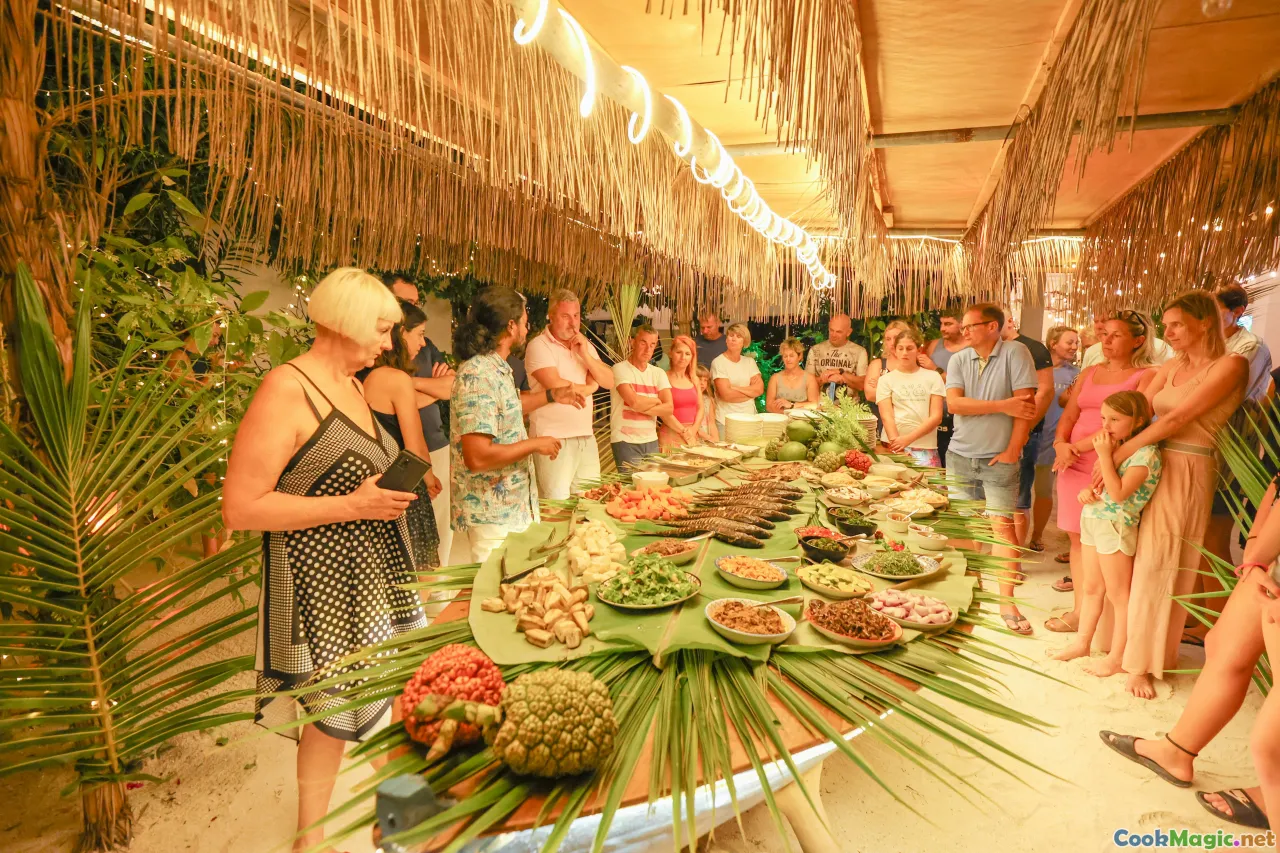The Role of Coconut in Everyday Grenadian Meals
11 min read Explore how coconut is a vital ingredient shaping the flavors and traditions of everyday Grenadian dishes. September 28, 2025 09:05
The Role of Coconut in Everyday Grenadian Meals
Nestled amidst the azure waters of the Caribbean Sea, Grenada is affectionately called the "Island of Spice". But beyond its famous nutmeg and allspice, the humble coconut stands as a silent yet vital hero in the island’s culinary tapestry. For Grenadians, coconut isn't merely an ingredient—it is a cultural heartbeat, woven into daily life, tradition, and the very flavor of their local cuisine. From sun-kissed beaches to bustling markets, coconut's versatile aroma, taste, and texture whisper stories of ancestry, resilience, and the unwavering love for flavors that stir the soul.
In this journey into Grenadian cuisine, we explore how the coconut transforms simple ingredients into soulful dishes, connects generations, and embodies the island’s spirit of vitality and warmth.
The Cultural Significance of Coconut in Grenadian Life

Coconuts on Grenada are more than just food—they are sacred symbols of life and community. Rooted in the island’s history, coconut trees stretch tall and proud, bringing sustenance and a sense of identity. The coconut palm is often called the "Tree of Life," because virtually every part of it serves a purpose—leaving, husk, shell, water, and meat—all tied to cultural practices.
For centuries, local traditions have centered around coconuts. In gatherings, festivals, and daily routines, coconuts are present. For example, during the annual Grenadian Carnival, the scent of fresh coconut is woven into the vibrant, lively atmosphere—drumming, dancing, and storytelling carried on the breeze.
The process of harvesting and processing coconuts is a community affair, often accompanied by storytelling, music, and shared labor. It fosters connections and reinforces the deep-rooted appreciation Grenadians hold for this multi-faceted fruit.
The Culinary Spectrum of Coconuts in Grenadian Dishes

Grenadian cuisine heavily relies on coconut at every turn. It is the backbone of many beloved dishes—each utilizing a different aspect of the coconut, whether it's the water, flesh, oil, or shell. This spectrum showcases how the island transforms simple coconut components into culinary treasures.
Coconut Milk and Cream—One of the most essential ingredients, coconut milk lends richness and depth. Made by extracting and simmering grated fresh coconut, it flavors stews, rice dishes, and even beverages.Grated Coconut (Fresh or Dried)—Used in baking, dumplings, and sweet treats, grated coconut adds chewy texture and natural sweetness.Coconut Oil—Crucial in frying, marinating, and as a finishing drizzle, coconut oil imparts a subtle nuttiness that elevates dishes.Coconut Water —The refreshing liquid inside the husk, often enjoyed plain, infused with lime, or used to make local drinks.
Through these elements, coconut consistently adds a touch of the tropics—aromatic, luscious, and unmistakably Grenadian.
Iconic Grenadian Coconut Dishes

Oil Down
When you visit a Grenadian kitchen, oil down is the star of the show—a communal dish synonymous with comfort and communal spirit. This hearty one-pot meal features salted meat or beef, seasoned vegetables, dumplings, yams, and breadfruit, all simmered in a spiced coconut milk base.
The magic lies in the slow simmering—allowing the flavors to meld into a rich, aromatic gravy. The coconut milk tenderizes the ingredients naturally, imparting a balance of sweetness and umami.
Callaloo with Coconut
A verdant, leafy community—callaloo—often includes bits of coconut grated into the mix, providing nuttiness and texture. It’s a traditional favorite served alongside saltfish fritters or boiled provisions.
Banana Coconut Fritters
Sweet, crispy, and fragrant, these fritters are made from ripe bananas mashed and folded with grated coconut, sweet spices, and a touch of flour. Fried until golden, they are a popular street-side snack or breakfast treat.
Coconut-infused Bakes
Soft, fluffy bread baked with shredded coconut inside, Bakes are an everyday staple, perfect for breakfast or a snack.
Coconut Tart
A sweet, dense pastry filled with coconut filling sweetened with brown sugar, vanilla, and sometimes a hint of cinnamon—a dessert that fills the air with warm, toasted coconut aroma.
Each of these dishes exemplifies the versatility of coconut and its ability to elevate simple ingredients into profound culinary expressions.
Traditional Techniques and Modern Twists

Grenadian home cooks and chefs have perfected traditional methods for processing coconut—grating by hand using a motorized grater, extracting milk using cloth squeezes, and slow-cooking in clay pots over open flames. These techniques are passed down through generations, imbibing dishes with history and soul.
However, contemporary Grenadian chefs are also experimenting, incorporating fusion styles and modern presentation. For instance, coconut-curried seafood tortellini combines island flavors with Italian techniques, while coconut-infused smoothies and desserts appeal to global palates.
The balance is in honoring tradition while embracing evolution—coconut remains at the heart of this culinary journey.
Tips for Using Coconut in Your Recipes

- Choose Fresh: For authentic flavor, opt for fresh coconuts over dried or processed options.
- Grate Properly: Use a fine grater for delicate cakes and a coarse one for textured dishes like rice or callaloo.
- Extract Milk Correctly: To make your own coconut milk, blend grated coconut with warm water, then strain through cheesecloth for rich, unadulterated flavor.
- Toast for Depth: Lightly toasting shredded coconut before adding to dishes enhances aroma and nuttiness.
- Save the Shells: Use empty shells for natural serving bowls or decorative pieces, connecting dishes to the island’s organic aesthetic.
By connecting these simple tips to your cooking, you bring a touch of Grenadian authenticity to your meals.
The Emotional and Personal Connection

Cooking with coconut on Grenada is often a shared family ritual, filled with stories and laughter. Grandma’s coconut oil-marinated roast or mama’s secret callaloo recipe evoke memories that transcend taste—woven into personal narratives of love, resilience, and belonging.
A plate of coconut-fried fish or a spoonful of oil down brings people together, reinforcing bonds and celebrating cultural identity. It’s not merely about sustenance; it’s about embedding the soul of the island into everyday moments.
Embodying Grenadian Identity Through Coconut

For Grenadians, coconut is a symbol of resourcefulness. When faced with limited resources, they transform coconuts into nourishing, flavorful dishes—an act of resilience and ingenuity.
Festivals like Grenada’s Coconut Festival celebrate this vital resource, highlighting its culinary and cultural roles. Artisans carve coconut shells into jewelry, and chefs craft innovative dishes using coconut as a core ingredient—affirming the coconut’s central position in national identity.
Whether in traditional recipes or modern gastronomy, coconut embodies the spirit of Grenada—vibrant, resilient, and delicious.
Wrapping the flavors, stories, and traditions of Grenadian cuisine into each coconut-infused dish is a testament to the island’s rich heritage. As you experiment with coconut in your kitchen, remember you’re partaking in a lineage that Kiessir, rich in tastes and tales, has nurtured for generations—an enduring symbol of Grenada’s flavorful soul.









